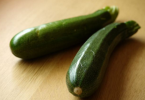Do you have a guinea pig as a pet? Are you appropriately educated on what you should feed him? Not everyone knows this, but guinea pigs have pretty strict dietary requirements, as well as restrictions.
You can’t just give any treats to your pet guinea pigs. In fact, that is true for all pets. However, many pet owners are not aware of the dangers of some foods fed to the furry family members. How do we know the difference between what is okay and what isn’t? What can guinea pigs eat? Can guinea pigs eat mango?
About Guinea Pigs and Fruit
It’s true that guinea pigs are, in fact, allowed to consume fruit, as well as vegetables. However, as a guinea pig owner, you do have to be careful about the food quantities you give your pet. While fruits and vegetables are healthy and tasty, they cannot be consumed excessively.
In fact, they should be treated as an occasional snacks. Too much fruit and/or vegetables can cause diarrhoea in guinea pigs. Also, fruits have a high sugar content that is detrimental to a guinea pig’s health.
When it comes to the actual feeding process, you have to consider chopping the fruit into small pieces. This way it’s easy for the guinea pigs to consume it. You also need to take the seeds out if applicable. Additionally, very important aspect is always to serve raw fruit.
Guinea pigs are not allowed to eat cooked food of any kind, including fruit or vegetables. The reason for this is that they cannot actually digest anything that is cooked. Raw is the way to go, regardless of the food item at hand.
Can Guinea Pigs Eat Mango?
The answer is yes, guinea pigs can eat mango. In fact, they even love eating mango.
However, as mentioned earlier, you have to be really careful in regards to the amount being served to your pet. No matter how much they like it, guinea pigs should not be allowed to eat mango more than once or twice a week, at best. More frequent mango consumption can lead to issues related to sugar content and that is obviously something to avoid.
What about Mango Skin, Pit or Dried Mango?
Don’t offer mango skin to your pet because it can present traces of pesticides. That means it is dangerous for your pet and you should not feed it to them. Make sure you prevent your guinea pig from chewing on mango skin. It’s better to peel off the skin before feeding it to your cavy.
In addition, skin is very rough and it can become a choking hazard or just difficult to swallow. The pit is also not recommended because it is too hard. Your pet gains nothing from trying to eat it.
Dried mango is not recommended to guinea pigs because it has higher sugar content. Fresh mango is better choice for guinea pigs. Also, it is possible that your pet will not even like the dried variety. Additionally, don’t offer mango juice to your cavy friends. Mango juice has too much sugar content and can harm your pet’s digestive system. Fresh water is enough for them.
Guinea Pig’s Diet
The bulk of their diet should be comprised of hay. Yes, that’s right, hay (more precisely, timothy hay) is something that should never go missing from a guinea pig’s living environment. In fact, it is recommended that you supply generous amounts of hay for your cavies on a daily basis. They love it and thrive when snacking and chewing on it.
Why is Hay so Important?
There are many reasons why hay should be given to your guinea pigs regularly.
First of all, hay serves as an excellent replacement for chew toys, which satisfy a guinea pig’s need to chew on something and it also ensures that their teeth don’t grow too long.
Secondly, hay can be consumed in high amounts without running the risk of gaining weight. Moreover, hay is high in fiber which is a significant nutritional benefit for guinea pigs.
In conclusion, mango can serve as a great snack or treat for guinea pigs everywhere as long as they like it and are willing to eat it. But no matter how tasty and healthy it is, it’s still not recommended for daily consumption. Mango should only be fed sparingly, once or twice a week. 2-3 little cubes of mango is enough for one pet.
When it comes to extras, like the pit or skin, these should definitely be avoided. Not only do they contribute to any nutritional value, they can also be dangerous.








Leave a Comment